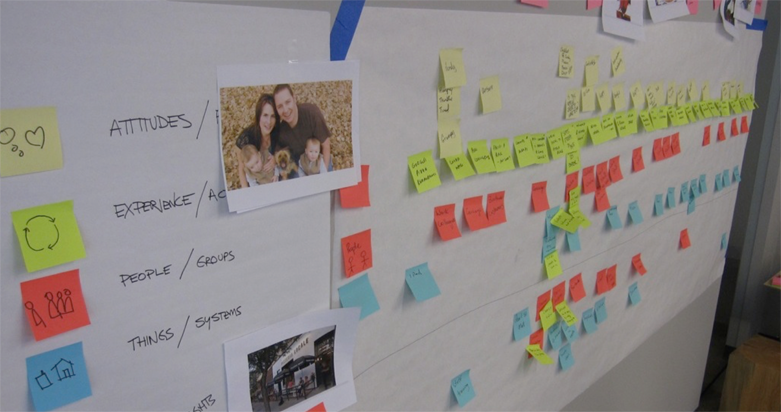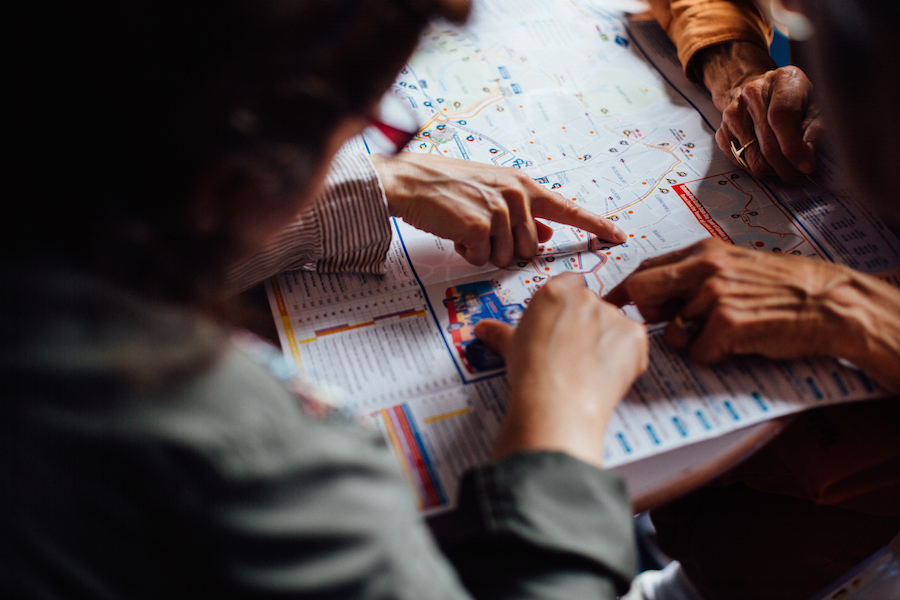What is a customer journey map?
A customer journey map is a visual or graphical interpretation of the overall story from an individual's perspective of their relationship with an organisation, service, product or brand, over time and across the channels they utilise. The story is told from the customer's perspective, but also emphasises important intersections between user expectations and business requirements.
No two journey maps are alike, and regardless of format they will allow you to consider interactions from your customers'points of view, instead of taking a business outwards focus. They can be used in both current state review and future state visioning to examine the present, highlight pain points and uncover the most significant opportunities for building a better experience for customers.
The process of customer experience mapping is a joint activity - the process itself being just as important as the actual artefact. The discussions that experience mapping fosters and the consensus it builds are important building blocks to any future customer experience transformation action.
There is no single way to map customer journeys nor is there any one right answer. In this blog we give you ten quick tips to improve your journey mapping sessions.

Tip One - Set clear objectives for the workshop
You need to make these clear for your customer journey mapping workshop (just like for any well run workshop!) Be sure to communicate (perhaps in advance) the focus for the session; your intended timings; the planned attendees and any success criteria for the workshop including the outputs intended. Make sure you have set clear expectations to manage any resistance that may occur in advance.
Tip Two - Set the context
Typically this will be some form of group orientation to the problem space, customer personas and to brief the group on prior discovery and customer research activity. This will help to get workshop attendees aligned to any prior work and ensure they are thinking in the right way for the workshop session.
Tip Three - Form the teams
Dividing participants into teams of four to six and ensure each has a balance of roles, seniority, customer experience and functions. Get the team working together as this will be crucial to your success.
Tip Four - Persona orientation
Focus attendees on exploring the dimensions of the persona (s) to be used as the lens for the customer journey, including any verbatims from real feedback. They need to be aware that this will be lens through which they will conduct the journey mapping.

Tip Five - Starting the journey
Encourage each team to go through the research notes and their understanding systematically and pull out the post-it-note points for each of the customer journey map areas following a well structured process.
Tip Six - Assemble the journey map
Use nominated people from each team to move the post-it notes to a large form template of the customer journey outline. Success here is all in the preparation!
Tip Seven - Consolidate
Depending on how you are structuring your outputs, work together as a large group to consolidate, challenge and iterate the emerging journey map, seeking relationships amongst the findings of each group. Keep a spirit of openness and constructive discussion rather than criticism.
Tip Eight - Finalise
By the end of the session, start to draw out insights and opportunities structured around an agreed (or draft) Journey Map for the nominated persona.
Tip Nine - Summarise
Towards the end of the workshop be sure to review achievements and highlight next steps and how the work will be progressed (whether by the same team or not).
Tip Ten - Sketch the map
Building the map itself will take time. Whether in or outside of the workshop be sure to walk it through with others and iterate and edit as you go. For longer sessions (ideally 1.5 days) the second half day can be used to develop and refine the sketched draft of the map itself.

Map the experience from beginning to end and be as comprehensive as you can. Ideally one touchline will cover the entire experience but if this is too complex you can map a touchline for each key customer interaction. Try to think beyond the obvious and look before and after the immediate touch points with your organisation.
Get more help
We love customer experience and can help you to improve how your organisation delivers more customer-centric products, services, processes and technologies. We can help you run your next customer experience programme or we can help to give you the tools and techniques to do so yourself.
Why not get in touch with us to find out more.

